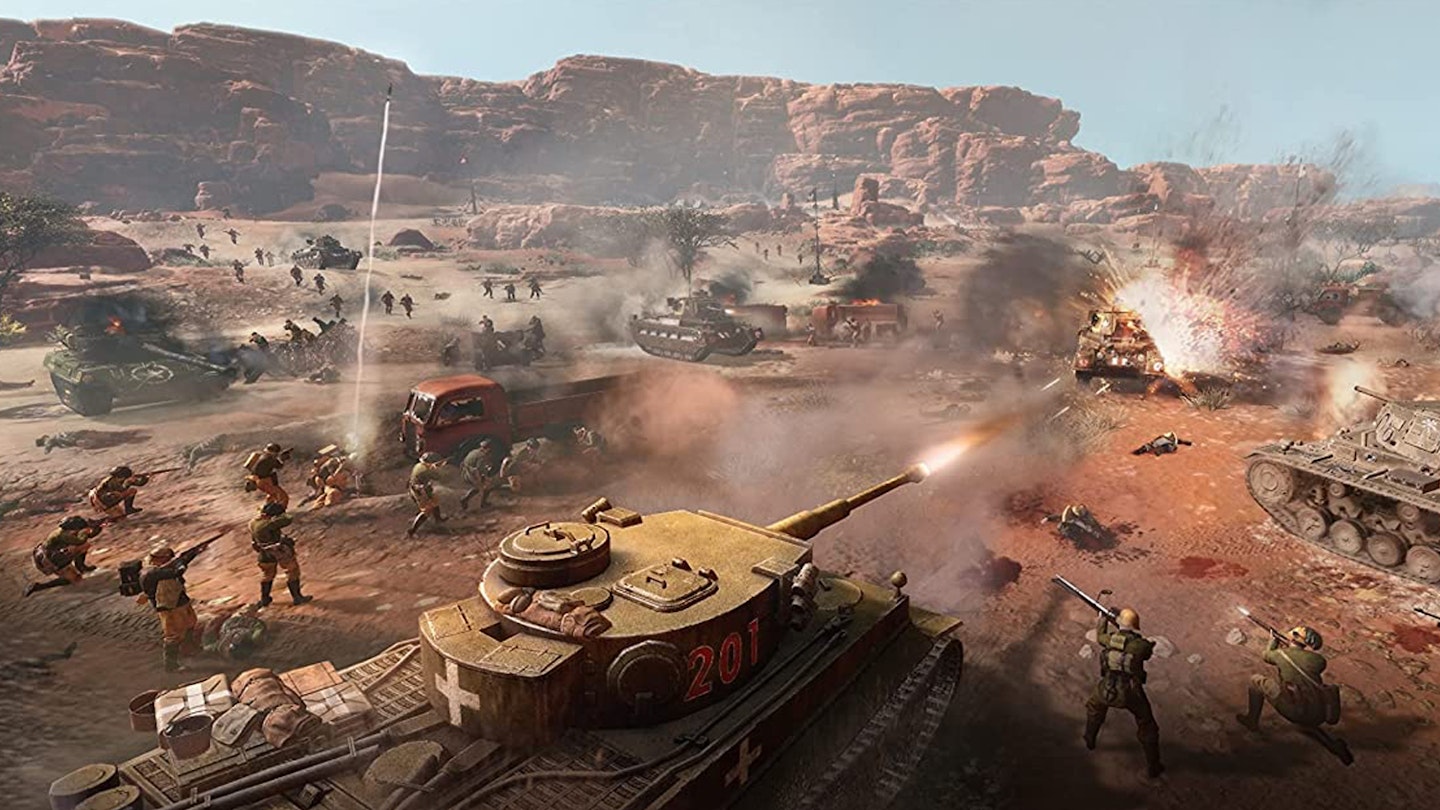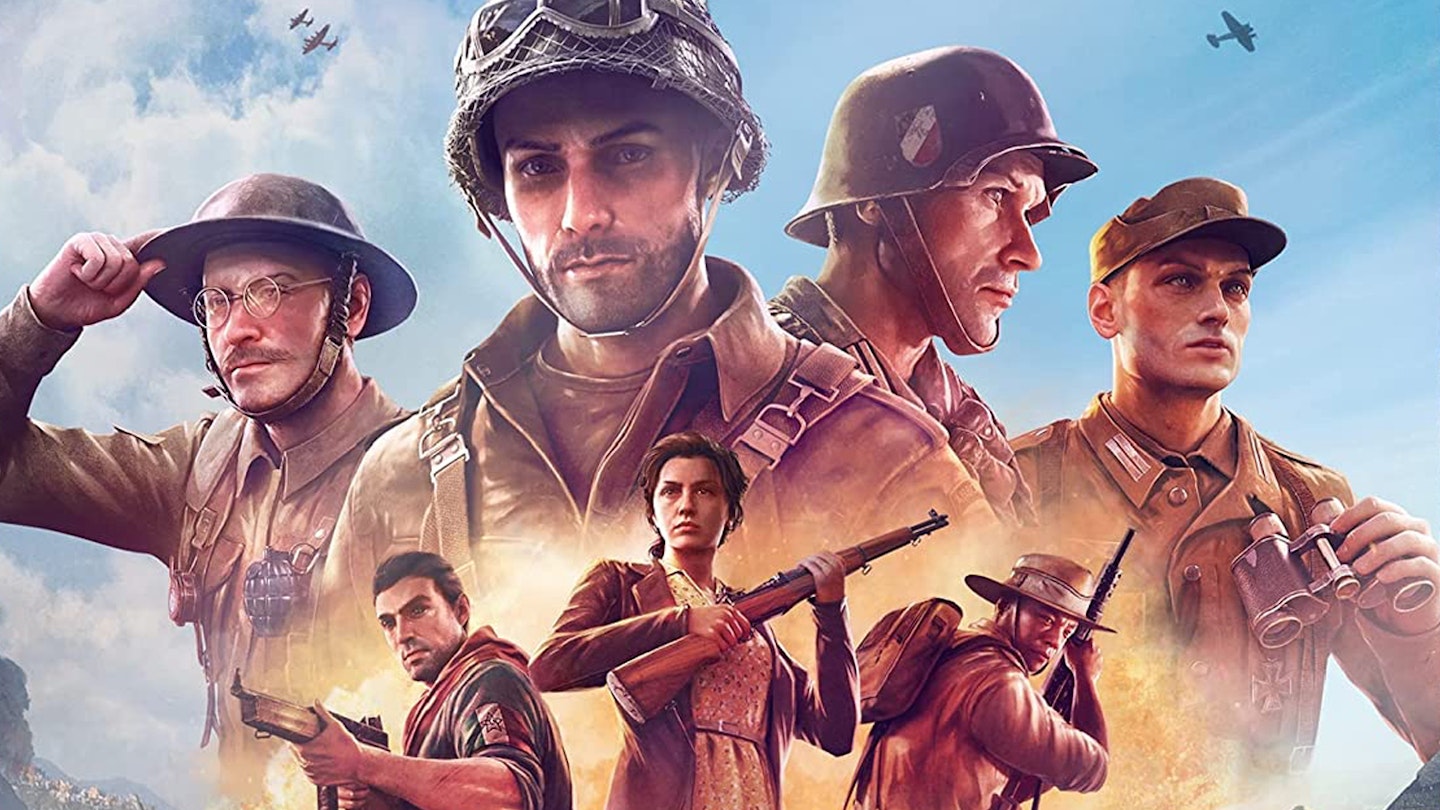Platform: PC
A decade after Company Of Heroes 2, developer Relic Entertainment returns to its beloved tactical series with a long-overdue third instalment. After the French campaign of 2006’s original entry and the frosty Soviet setting of the sequel, Company Of Heroes 3 opts for a sunnier theatre of war as its core campaign focuses on the Allied push into Italy in the last years of World War II.
For military history buffs, it’s all fairly accurate, bar a few missions where you can nudge events for the better. Series history buffs will also be pleased to hear that the signature elements of sharply designed battlefield maps where the smallest decision can impact the outcome of a skirmish remain intact. Progressing through Italy means working through a mix of relatively randomised encounters and key story missions as you march your forces from the south of the country, taking back territory – or trying to – as you go. The former skirmishes often take place when rival companies move into the same location, leading to battles layered with a variety of bonus objectives or challenge modifiers to contend with – a smaller number of units, for instance.

The main encounters are typically more fixed, often based around important historical battles, moving the central story along. However, these more goal oriented missions often feel poorly explained to players. Battle objectives may seem to conflict, or need completing in a specific yet unspecified order, while certain major encounters won’t even unlock until you’ve completed particular steps beforehand. None of this is especially clear.
If you can muddle through the busy UI and unclear objectives, Company Of Heroes 3 proves an often thrilling affair.
Actually controlling your forces in battle can become overwhelming too, with an array of overlapping information on screen and too much minutiae to recall on what each unit or facility does, how they move, and what order actions will occur in. Relic tries to mitigate this somewhat – players can enter tactical pause while queuing up commands for their troops, giving as much time as needed to catch their breath, remember what each tool or option does, and issue orders. Hover-text over some (but crucially not all) UI elements can offer reminders of what each aspect does, but the inconsistency here doesn’t help.
If you can muddle through the busy UI and the sometimes unclear objectives though, Company Of Heroes 3 proves an often thrilling affair. The story is solid, conveyed through great voice acting (and significantly less-great, barely-animated cutscenes), but Relic brings the real spectacle to its maps. Whether it’s the sight of soldiers vaulting into cover at the last second or a cacophony of explosions to punctuate important events, battles always feel impressive and high stakes. However, some may find even the maximum aerial zoom isn’t zoomed out enough, making for a rather cramped view of the action.

Somewhat controversially, Company Of Heroes 3’s other campaign mode sees you hopping to the other side of the Mediterranean and controlling the Deutsche Afrika Korps as it tears through Libya. Led by Nazi General Erwin Rommel, who earned the nickname ‘The Desert Fox’ for his string of victories on the terrain, it’s a far cry from the “heroes” of the series’ title. Relic tries to mitigate the discomfort of playing as Nazis by telling the scenario’s story from the perspective of the civilians, notably a Jewish family torn apart by the invasion, and highlighting the devastation wrought by the DAK – but it’s scant comfort when, during the meat of the roughly six-hour campaign, you’re guiding a bunch of Nazis throwing banter at each other.
Awkwardly, then, the North African campaign is probably the tighter of the two story modes. Its comparative brevity helps, with only eight linear missions (which also cuts down on the discomfort of, again, playing as the Nazis), but it’s also more focused. Levels will often have multiple stages to complete, and those stages feel better communicated than in the Italian setting. Meanwhile, leaning more on the faction’s tanks and vehicles opens up new tactical options, both in terms of raw power and in using those vehicles as cover for ground troops. Relic has created a refined tactical experience here, but even though it tries to dispassionately present the Axis movements in a purely historical view, while highlighting the impact on the communities ransacked as a result, the act of guiding the DAK still feels somewhat lionising of them.
Ultimately, Company Of Heroes 3 feels more tailored for hardcore fans of the series, or at least of the military tactics genre. Returning players will likely feel right at home with its mixture of territory control and tense skirmishes, but it all feels a bit inaccessible to anyone who hasn’t spent the last decade playing the previous entries on repeat.
